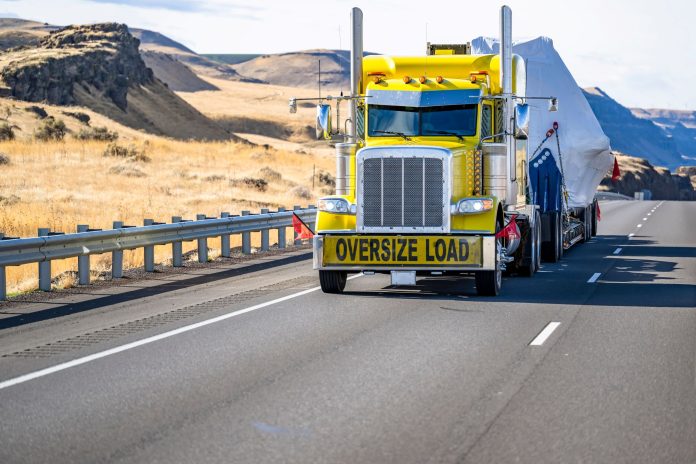The logistics industry is a versatile and ever-evolving field that requires adept maneuvering and strategic handling, especially when transporting heavy hauls and oversized loads. However, this specialized area of logistics entails various complexities, from choosing the right equipment to adhering to legal guidelines, making the process seem complex.
Fortunately, specialized shipping companies, like Titan Worldwide, continually push the boundaries, demonstrating that no cargo is too large or heavy to transport with the right tools and planning.
If you are considering shipping heavy haul or oversized loads, this article can demystify the process and provide essential insights into the intricacies of shipping heavy haul and oversized loads.
- Understand What Constitutes Heavy Haul And Oversized Loads
A critical first step in shipping heavy hauls and oversized loads is to precisely comprehend these terms. Typically, these refer to cargoes that surpass the standard legal size and weight limits established by individual states or countries.
In the United States, a load is generally considered oversize or heavy haul if it exceeds the standard width of 8.6 feet, the height of 13.6 feet, or the total weight of 80,000 pounds. However, these are merely baseline guidelines.
Recognizing that these parameters are not universal and can vary significantly across different states and countries is essential. Certain jurisdictions may have stricter or more lenient regulations, and these variations must be factored into the planning process.
- Obtain Permits And Adhere To Legal Regulations
Procuring the necessary permits represents a significant challenge in shipping heavy hauls and oversized loads. Every state or country has its specific rules and regulations, necessitating in-depth research and proper documentation.
The permit application process often involves presenting detailed information about the load, equipment, and planned route. Interstate or international shipments compound this complexity, as permits from multiple jurisdictions may be required.
However, acquiring permits is only the first step. Transport companies must also adhere to various other regulations, such as travel restrictions, escort requirements, and specific safety measures. Remember that regulations are also prone to changes, and staying abreast of these updates is vital to prevent any regulatory violations.
- Choose The Right Equipment
Once the load parameters are established, the next step is selecting the appropriate equipment. This decision depends on multiple factors, including the cargo’s nature, the journey’s distance, and the infrastructure through which the cargo will travel.
For example, flatbed trailers are commonly used for loads that are oversized in width and length due to their design. Meanwhile, modular trailers are ideal for extraordinarily heavy loads, as they can distribute the weight more evenly.
However, the selection process goes beyond merely accommodating the load’s size and weight. The equipment should also promote safety, maintain efficiency, and meet the specific requirements of the load. This may include features for weather protection, securement points for load stability, and even specialized loading and unloading mechanisms to facilitate the safe handling of the cargo.
- Plan The Route
Planning the transportation route for heavy hauls and oversized loads requires meticulous attention. The route must be analyzed to ensure it can accommodate the load’s size and weight.
This includes assessing road width, bridge height, and weight restrictions. Additionally, other constraints like construction zones, traffic patterns, and potential weather issues should be taken into account.
In some cases, particularly when dealing with exceptionally large loads, it might be necessary to coordinate with utility companies for temporary removal or adjustment of power lines. Special escort vehicles might also be required to ensure safety during transit.
The planning team and the drivers must maintain real-time tracking and constant communication to promptly respond to any on-route challenges and ensure the successful execution of the planned route.
- Ensure Safety And Insurance
The safety of both the cargo and the public is a paramount concern when transporting heavy hauls and oversized loads. Implementing stringent safety measures is non-negotiable.
This includes conducting thorough pre-transport inspections of the cargo and equipment, using escort vehicles where required, installing adequate safety signage, and maintaining strict adherence to speed limits and other traffic laws.
Insurance also plays a critical role in this process. The transportation of such loads inherently carries high risk, and unforeseen incidents or damages can lead to substantial financial losses.
Therefore, a comprehensive insurance policy is essential, covering various potential scenarios, including damage to the cargo, equipment, or third-party property and injuries to personnel or the public. This coverage provides financial security and peace of mind, ensuring that even if an incident does occur, the transport company can quickly recover and return to operations.
Conclusion
Shipping heavy haul and oversized loads is a multifaceted operation that demands expertise, careful planning, and stringent adherence to regulations. It requires understanding the nature of the load, selecting appropriate equipment, obtaining the necessary permits, meticulous route planning, and ensuring safety and insurance coverage.
While challenging, with the right knowledge and resources, shipping heavy hauls and oversized loads can be successfully navigated to ensure efficient, safe, and legal transport of goods.











